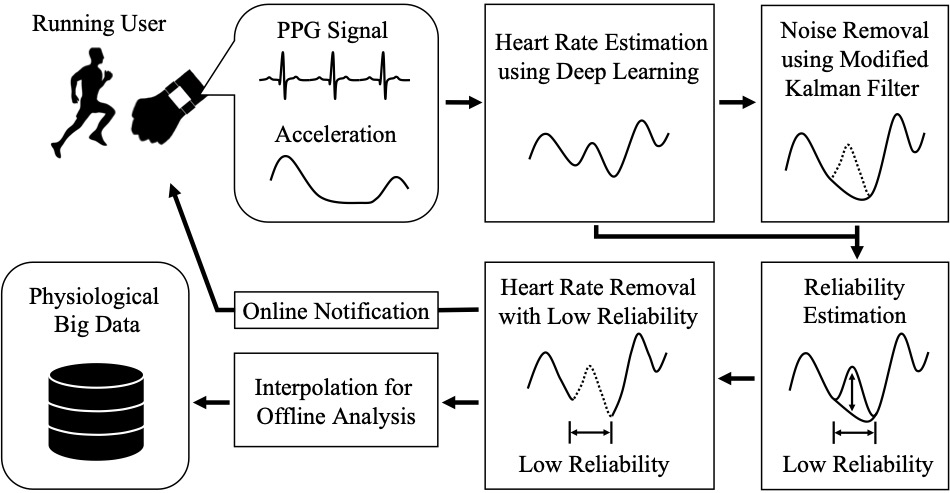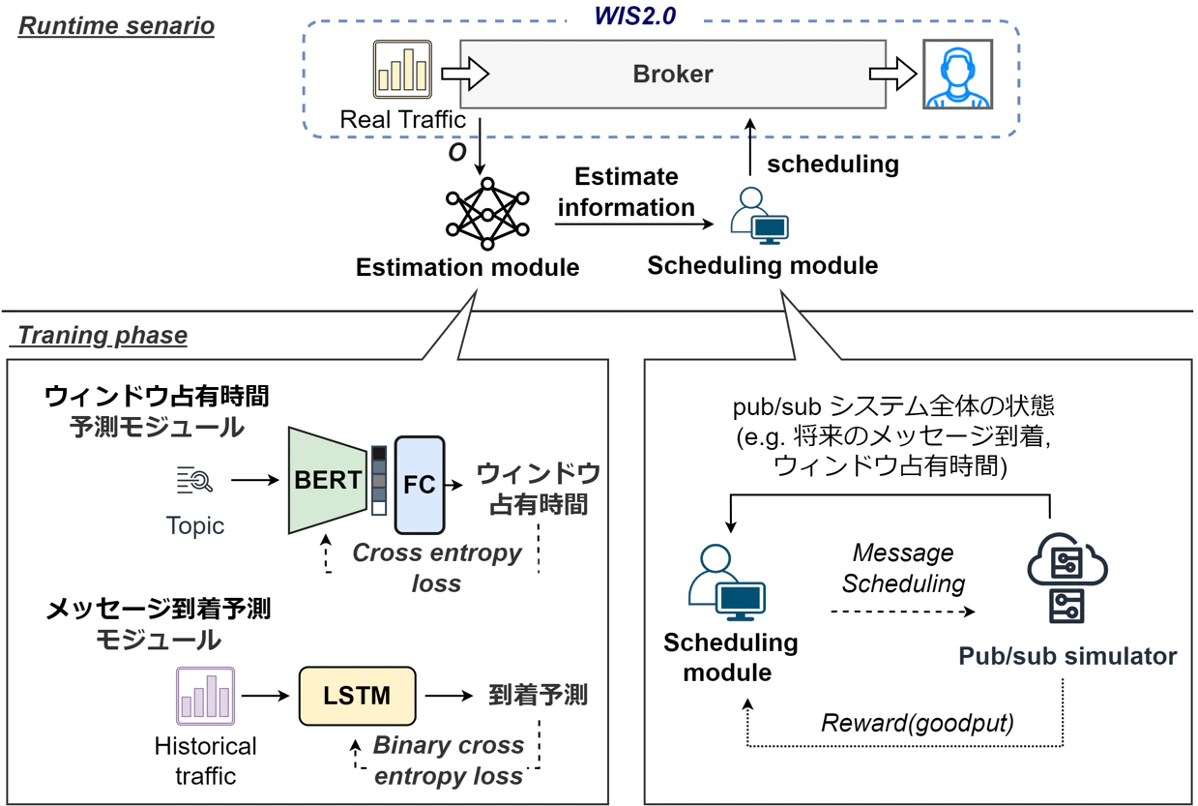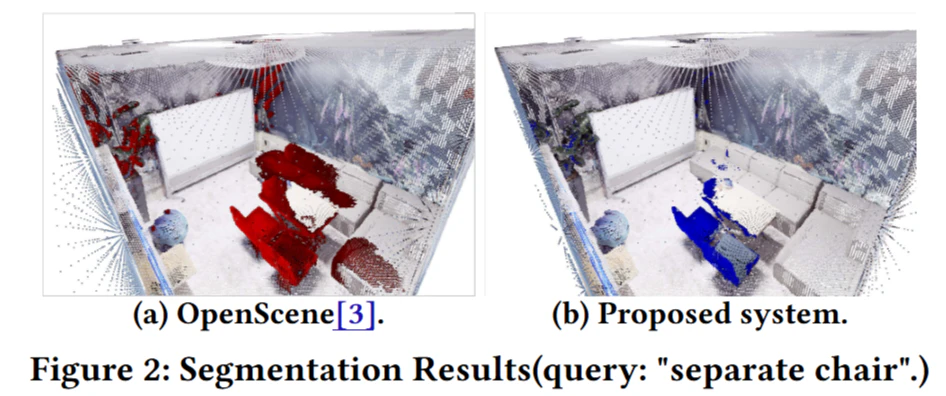
Heart Rate (HR) measurement using wrist-worn devices suffers from noises owing to body movement. Even though many researchers have proposed sophisticated methods for the compensation of noisy measurement, such factors cause corruption of sensor data itself, leading to difficulty in compensation. In this study, we design a method for the reliability estimation of HR measurement. The key idea is that the change of HR correlates with the magnitude of body movement and current HR. For modeling the correlation, we construct a modified Kalman filter that estimates the displacement of HR from the statistical data of HR measured by a chest-worn device and the variance of acceleration measured by a wrist-worn device. Then, we define the reliability of HR measurement as the absolute error between the output of the modified Kalman filter and the HR measured by a wrist-worn device. For evaluation, we compare our method with a conventional outlier removal and smoothing after compensation using one of the state-of-the-art methods based on deep learning.
- Hiroki Yoshikawa, Masayuki Hayashi, Akira Uchiyama, Teruo Higashino, "Reliability Estimation of Heart Rate Measurement Using Wrist-Worn Devices," Proc. of the 13th IPSJ SIG-MBL International Conference on Mobile Computing and Ubiquitous Networking (ICMU 2021), Tokyo, Japan, November 17-19, 2021.doi:https://doi.org/10.23919/ICMU50196.2021.9638918
- Masayuki Hayashi, Hiroki Yoshikawa, Akira Uchiyama, Teruo Higashino, "Preliminary Investigation on Band Tightness Estimation of Wrist-Worn Devices Using Inertial Sensors," Proc. of the 10th EAI International Conference on Wireless Mobile Communication and Healthcare (MobiHealth 2019), Dublin, Ireland, November 14-15, 2019.doi:https://doi.org/10.1007/978-3-030-49289-2_20





